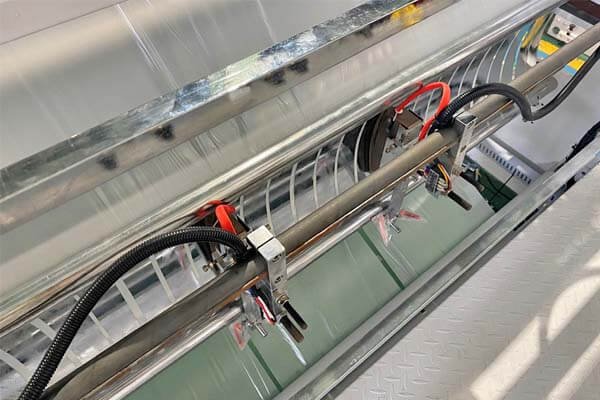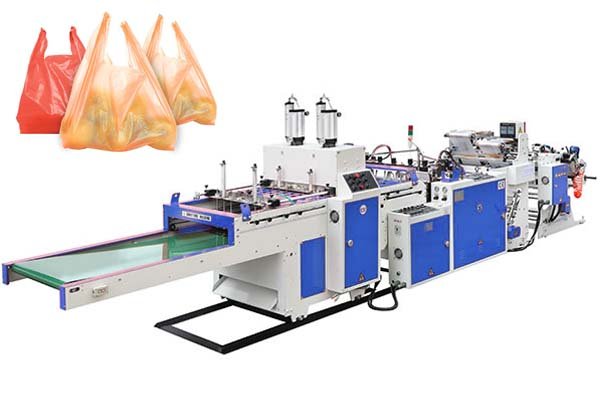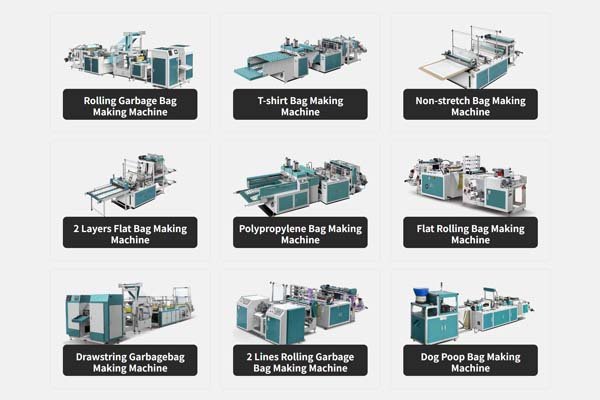
Struggling with customs for your new machinery? An incorrect HS code1 can lead to costly delays, fines, and headaches. We will show you the right way to classify your equipment.
The primary HS code for a bag making machine2 is 8477.80. This code is for other machinery used for working with rubber or plastics that is not more specifically described elsewhere in the chapter.
The Harmonized System (HS) code is a global standard used to classify traded products. Getting it right is essential for smooth international shipping. The code 8477.80 places your bag making machine in the correct category for plastics-working machinery. This general classification covers most standard bag making machines, from our T-Shirt Bag Making Machines to our Heavy-Duty Bag Machines. We use this code to ensure your machine documentation, like the commercial invoice3 and bill of lading4, is accurate. This prevents any flags or questions from customs officials in your country.
At BagMec®, we have shipped over 500 machines annually to more than 50 countries. This experience means we understand the nuances of global logistics5. Our team ensures that the HS code1 we provide for your machine is precise. For example, even if you order a highly customized machine with special features like a logo embosser, its primary function is still bag making. So, it falls under 8477.80. This attention to detail is part of our commitment to a seamless delivery process, from our factory in Wenzhou to your production floor.
What is the HS code for film blowing machine?
Are you expanding your production with a film blowing machine6? You will need the correct HS code for it, which is different from a bag maker's. Let's clarify it.
The most common HS code for a film blowing machine is 8477.30. This category specifically covers blow-molding machines, which accurately describes the process of creating plastic film through extrusion and air inflation.
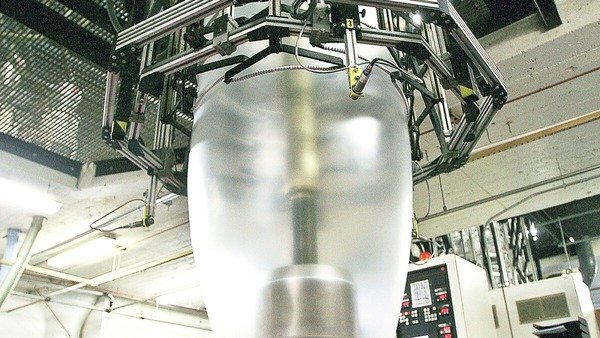
A film blowing machine has a very different function from a bag making machine. This difference is critical for customs classification7. The film blowing machine creates the raw material—the plastic film roll. The bag making machine then converts that roll into a finished product. Because their functions are distinct, they belong to different HS code subheadings. Using 8477.30 for your film blower tells customs officials exactly what the machine does, which helps avoid confusion and potential re-classification fees. We make sure this distinction is clear in all our export documents.
Breaking Down HS Code 8477.30
To understand the code better, let's look at its components. The HS code system is hierarchical, and each number has a specific meaning.
| Code Section | Number | Description | Relevance to Film Blowing Machine |
|---|---|---|---|
| Chapter | 84 | Nuclear Reactors, Boilers, Machinery | This is the broad category for most industrial machinery. |
| Heading | 77 | Machinery for working rubber or plastics | This narrows it down to the plastics industry. |
| Subheading | 30 | Blow-moulding machines | This is the specific code for the film extrusion and blowing process. |
This granular detail is why using the correct six-digit code is so important. It provides a universal language for customs agents globally, whether your machine is heading to Europe, the Americas, or Asia.
Why is a Film Blower Not Classified The Same as a Bag Maker?
The core reason for the different classifications lies in the machine's primary function. Customs authorities classify machines based on what they do.
- Film Blowing Machine (8477.30): This machine creates a product (plastic film) from raw material (plastic pellets) using a blow-molding process. Its main purpose is extrusion. At BagMec®, our machines are compatible with various materials like LDPE, HDPE, and even biodegradable PLA, but their core function remains blow-molding.
- Bag Making Machine (8477.80): This machine converts an existing material (a roll of plastic film8) into a new product (a bag). Its main purpose is cutting, sealing, and forming. It does not create the film itself. This is why our machines, from the Side Sealing Bag Machine to the complex Wicketer Bread Bag Machine, fall under the "other machinery" category of 8477.80.
This distinction seems small, but it is fundamental for global trade compliance.
How We Handle Complex Shipments
Many of our partners, like a large logistics giant in India, order complete production lines. A typical order might include a film blowing machine, a bag making machine, and a printing machine. In these cases, we do not bundle everything under one code.
We prepare separate documentation for each major piece of equipment. This ensures maximum clarity for customs.
Sample Documentation for a Full Line Order:
- Commercial Invoice 1: Film Blowing Machine, HS Code 8477.30
- Commercial Invoice 2: T-Shirt Bag Making Machine, HS Code 8477.80
- Commercial Invoice 3: Flexographic Printing Press, HS Code 8443.19
By itemizing each machine with its correct HS code, we prevent the entire shipment from being delayed due to a classification question on a single item. This is part of the end-to-end expertise we offer.
What is the HS code for plastic bag printing machine?
Adding branding to your bags requires a printer. This machine has its own specific HS code, completely separate from plastic-working machinery. Here is what you need to know.
The HS code for a plastic bag printing machine, such as a flexographic or gravure press, is typically 8443.19. This code is for "Other printing machinery," placing it in the printing category, not the plastics category.
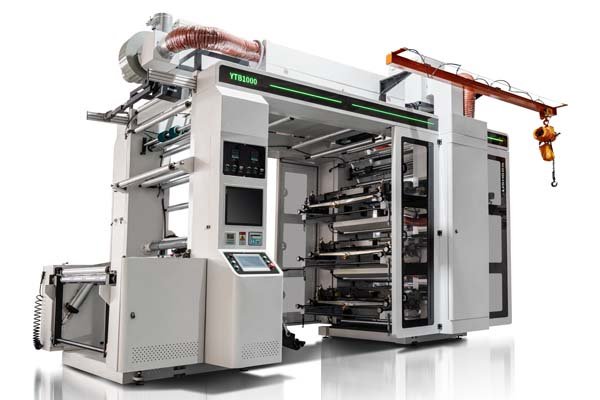
It is a common mistake to assume that a machine used in a plastic bag production line must have a plastics-related HS code. However, customs classifies machines based on their core technology. A printing press uses printing plates and ink to transfer an image onto a surface. This function is covered under Chapter 84, Heading 43, which is for printing and graphic arts machinery. Whether the machine is printing on paper, metal, or plastic film8, its fundamental identity is a printer. Using 8443.19 is essential for accurate declaration.
Understanding the 8443 Category
The 8443 heading is broad, covering everything from desktop office printers to massive industrial presses. The subheading ".19" helps narrow it down. Let's see how.
| Code Section | Number | Description | Relevance to Plastic Bag Printing |
|---|---|---|---|
| Chapter | 84 | Nuclear Reactors, Boilers, Machinery | The general category for industrial machines. |
| Heading | 43 | Printing machinery used for printing by means of plates, cylinders... | This specifically identifies printing technology. |
| Subheading | 19 | Other printing machinery | This "catch-all" is for industrial printers like flexo. |
This means your high-speed, 8-color flexographic press for printing on HDPE film shares a classification family with many other types of printers. We ensure this code is used for any standalone printing units we provide.
Integrated vs. Standalone Printing Units: A Key Distinction
This is where things can get technical, but it is an important difference that affects the HS code.
- Standalone Machine: If you buy a printing press as a separate, independent machine, it is classified under HS Code 8443.19. You feed film into it, it prints, and you rewind the printed film. It is a distinct step in the production process.
- Integrated Unit: Some of our machines, like a fully automated FFS (Form-Fill-Seal) system, can have a small printing unit built directly into the machine. In this case, the entire machine is classified by its primary function. The primary function is bag making, not printing. So, the whole system would be classified under HS Code 8477.80.
As a manufacturer, we help you determine the correct classification. For one of our German clients, we supplied eight FFS machines with integrated date coders. The entire system was correctly classified under 8477.80 because the primary function was forming and sealing the bag. Understanding this rule is crucial for complex, all-in-one solutions.
Factors Influencing a Printer's Customs Declaration
While the main HS code might be 8443.19, the customs declaration9 often requires more detail. We provide this on the commercial invoice3 to create a clear picture for officials.
Common Printing Technologies and Their Descriptions
| Technology | Description for Customs Declaration | Common Use Case |
|---|---|---|
| Flexographic | "Flexographic Printing Press, 8-Color, for Plastic Film" | High-volume shopping bags, food packaging |
| Gravure | "Rotogravure Printing Machine, for High-Definition Laminated Film" | Premium quality pouches, high-detail graphics |
| Digital/Inkjet | "Industrial Inkjet Printing System for QR Code and Batch Numbering" | Traceability, variable data on courier bags |
Our Indian logistics5 client required a heavy-duty courier bag line with integrated QR code printing. In that case, we described the machine as a "Courier Bag Making Machine with Integrated Thermal Transfer Printer." The primary HS code remained 8477.80, but the detailed description clarified the machine's full capabilities for customs, ensuring a smooth clearance.
Conclusion
Getting the HS code right is simple when you work with an experienced partner. The code for a bag making machine is 8477.80, a film blower is 8477.30, and a printer is 8443.19. We manage these details so you can focus on production.
-
Understanding HS codes is crucial for smooth customs clearance and avoiding delays. ↩ ↩
-
Explore detailed specifications to ensure you choose the right machine for your production needs. ↩
-
Discover why a commercial invoice is vital for international trade compliance. ↩ ↩
-
Understand the significance of a bill of lading in the shipping process. ↩
-
Learn effective logistics strategies to streamline your shipping process. ↩ ↩
-
Learn how film blowing machines create plastic film, essential for bag production. ↩
-
Gain insights into customs classification to avoid costly mistakes in shipping. ↩
-
Explore different types of plastic film to enhance your production capabilities. ↩ ↩
-
Understand the role of customs declarations in international shipping. ↩




